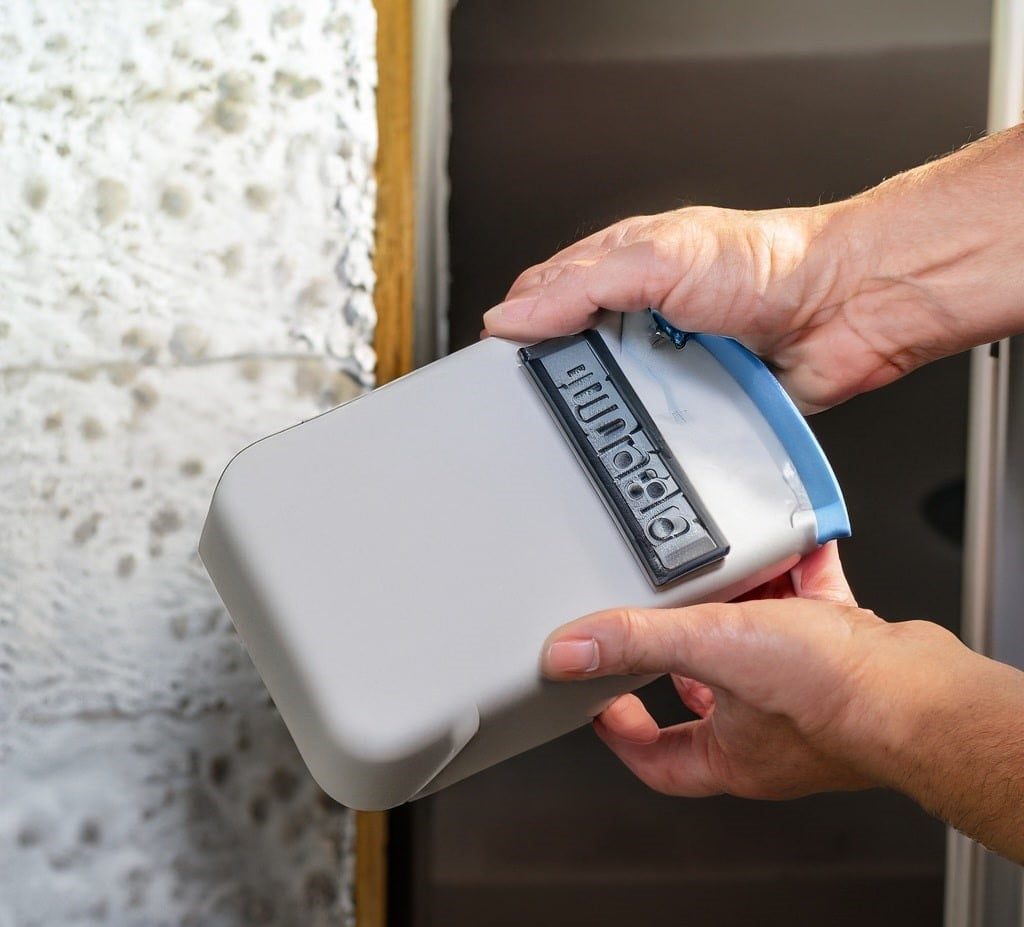Wall moisture issues can silently wreak havoc on your home’s structure and your family’s health. Whether you’re dealing with visible water stains or suspect hidden moisture problems, a wall moisture test is essential. For homeowners on the Sunshine Coast, combining wall moisture testing with water leak detection ensures a comprehensive approach to safeguarding your property. This guide delves into the importance, process, and benefits of wall moisture tests.

What Is a Wall Moisture Test?
A wall moisture test is a diagnostic process to measure and detect moisture levels within walls. This test identifies hidden moisture, which could lead to structural damage, mold growth, and decreased indoor air quality. In the Sunshine Coast’s climate, periodic testing is critical to manage potential moisture problems.
Signs Your Walls May Have Moisture Issues
Be on the lookout for these common warning signs:
- Visible Stains: Dark patches or discoloration on walls.
- Peeling Paint or Wallpaper: Moisture can compromise adhesion, causing these materials to bubble or peel.
- Musty Odors: A persistent, damp smell often signals hidden moisture or mold.
- Warped Walls: Excessive moisture can cause walls to bend or deform.
- Mold Growth: Visible mold is a clear indicator of high humidity or moisture presence.
The Role of Sunshine Coast Water Leak Detection
Water leaks are often the primary source of wall moisture. Sunshine Coast water leak detection services complement wall moisture testing by identifying the root cause of the issue. Common sources include:
- Leaking Pipes: Hidden plumbing leaks within walls or floors.
- Roof Damage: Broken tiles or faulty flashing allowing water ingress.
- Faulty Gutters and Downpipes: Improper drainage leading to water pooling near walls.
- Poor Waterproofing: Older homes may lack modern waterproofing solutions.
How to Perform a Wall Moisture Test
While professional services are recommended, you can follow these basic steps for a DIY wall moisture test:
- Visual Inspection: Look for visible signs like stains or peeling paint.
- Use a Moisture Meter:
- Choose a quality moisture meter.
- Press the meter against the wall surface.
- Record the moisture reading. Most walls should have moisture levels below 15%.
- Check for Humidity: Use a hygrometer to measure the air’s humidity level near suspected problem areas.
- Test Multiple Areas: Check various parts of the wall to identify moisture patterns.
For accurate results and comprehensive solutions, consider hiring a professional service that specializes in both wall moisture tests and Sunshine Coast water leak detection.
Benefits of Regular Wall Moisture Testing
- Prevent Structural Damage: Moisture weakens building materials, compromising structural integrity.
- Improve Air Quality: Reducing moisture minimizes mold growth, promoting healthier indoor air.
- Save Money: Early detection prevents costly repairs from advanced damage.
- Peace of Mind: Knowing your home is dry and safe alleviates stress.
Professional Moisture Testing: What to Expect
Professional wall moisture testing combines advanced tools and expertise for precise results. Services may include:
- Thermal Imaging Cameras: Detect temperature variations indicating moisture presence.
- Pin and Pinless Moisture Meters: Provide accurate readings without damaging walls.
- Leak Detection Systems: Specialized tools for Sunshine Coast water leak detection.
- Customized Solutions: Tailored advice to resolve existing issues and prevent future ones.
Tips to Prevent Wall Moisture Problems
- Maintain Proper Ventilation: Ensure adequate airflow in kitchens, bathrooms, and laundry rooms.
- Fix Leaks Promptly: Address plumbing or roof leaks as soon as they’re discovered.
- Inspect Gutters and Downpipes: Regularly clean and maintain drainage systems.
- Use Dehumidifiers: Control indoor humidity, especially during humid Sunshine Coast weather.
- Waterproof Vulnerable Areas: Apply waterproofing solutions to walls exposed to moisture.
Case Study: Successful Wall Moisture Testing on the Sunshine Coast
Scenario: A homeowner on the Sunshine Coast noticed peeling paint and a damp odor in their living room.
Action: They engaged a professional service for a wall moisture test and water leak detection.
Findings: A hidden plumbing leak and poor waterproofing in an external wall.
Solution: The professionals repaired the leak, improved waterproofing, and treated the affected areas to prevent mold.
Outcome: The homeowner avoided further damage and restored a healthy indoor environment.
Conclusion
A wall moisture test is an essential step in protecting your Sunshine Coast home from hidden damage and health risks. Combining it with water leak detection ensures you’re addressing both symptoms and causes of moisture issues. Don’t wait for visible damage to take action—schedule a professional wall moisture test today and safeguard your home’s future.
FAQs
Q1: How often should I perform a wall moisture test?
A: Annual testing is recommended, especially for older homes or after severe weather events.
Q2: Can I use a DIY moisture meter?
A: Yes, but professional services provide more accurate and comprehensive results.
Q3: What’s the ideal moisture level in walls?
A: Most walls should have moisture levels below 15%.
Q4: How do I know if I need Sunshine Coast water leak detection?
A: If you notice unexplained moisture, increased water bills, or visible damage, consider a professional leak detection service.
Q5: How much does professional moisture testing cost?
A: Costs vary based on property size and severity, but they’re a worthwhile investment to prevent extensive damage.
